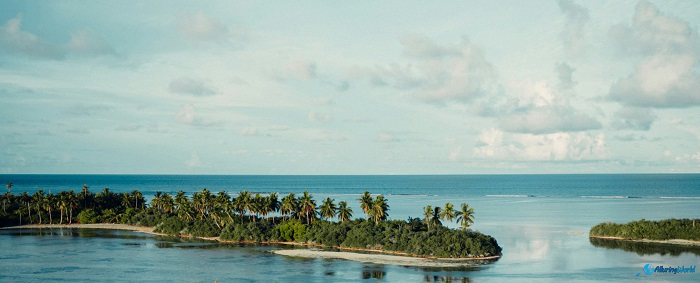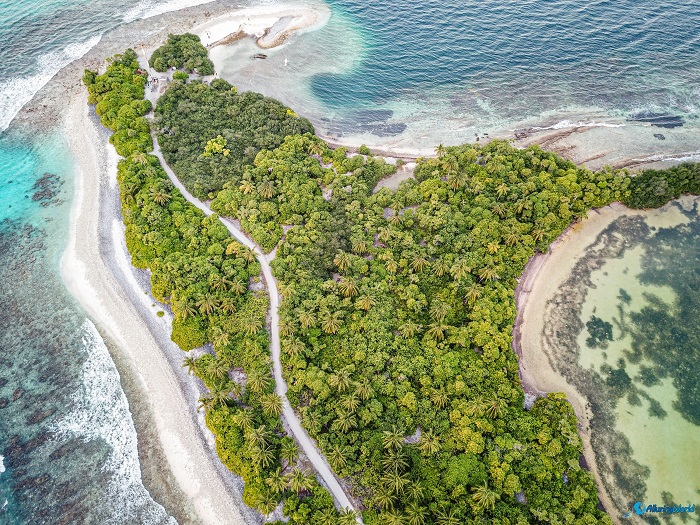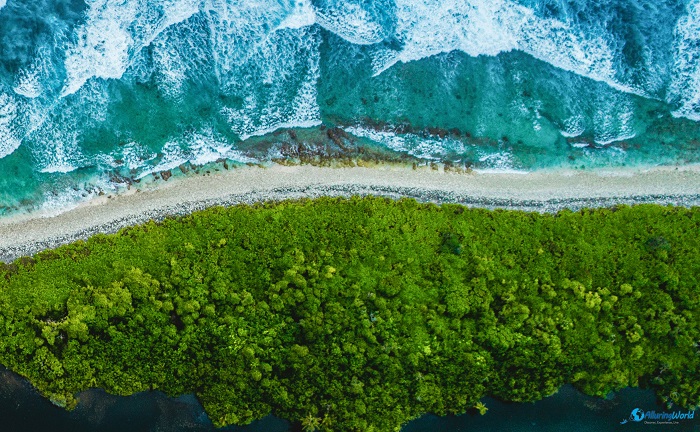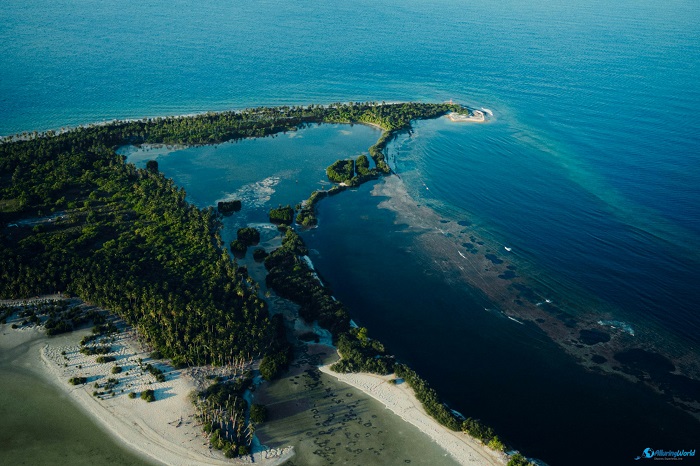Addu Atoll is a large and very important atoll that is located at the southernmost tip of the Republic of the Maldives. Being one of the most distinctive and culturally rich atolls in the island nation, Addu is uniquely shaped like a heart when viewed from above, and as it lies just south of the equator, interestingly, it is separated from the rest of the Maldives by the vast expanse of the Indian Ocean. Unlike many other Maldivian atolls that are known primarily for luxury tourism, Addu is equally renowned for its historical significance, unique geography, and vibrant local communities that make it a place of both cultural depth and natural beauty.
Geologically, Addu Atoll was created through coral reef formation, like the rest of the Maldives. Over millions of years, volcanic islands gradually sank into the ocean, leaving behind fringing coral reefs that grew upward to form the ring-shaped structures known as atolls. Addu is a particularly large atoll, with a vast lagoon that is dotted by islands connected by causeways, a rare feature in the Maldives. Its coral reefs remain among the healthiest in the country, providing protection against erosion and creating rich ecosystems that support marine life.

Addu holds great importance historically, both within the Maldives and in a broader international context. During World War II, the British established a naval base on Gan Island, one of the largest islands in the atoll. This base became a critical outpost for the Allied forces in the Indian Ocean, and even though the landscape changed throughout the years, today the remnants from that time, including runways and old military buildings, still stand as reminders of that period. After the war, the airfield on Gan continued to serve as a key asset, eventually being developed into Gan International Airport, which today provides an essential gateway to the southern Maldives.
ADVERTISEMENT
Another important chapter in Addu’s history occurred in the mid-20th century, when local leaders briefly declared independence from the central government of Malé, the capital city of the Maldives, and they formed what was known as the United Suvadive Republic. Although this was an unsuccessful revolt against Malé and was short-lived, it still reflects the independent spirit of Addu’s people and their distinct cultural identity. This event remains a notable moment in Maldivian history and underscores the atoll’s political and cultural significance.

Today, Addu Atoll continues to play a central role in the Maldives. It is home to around 30,000 residents, making it one of the most populous atolls in the country. The people of Addu live across several inhabited islands, with many connected by a causeway system that stretches more than 14 km (8.7 mi), allowing for more effortless movement between islands. This infrastructure is unique in the Maldives and gives Addu the feel of a small city spread across multiple islands, unlike the isolated island communities found elsewhere in the country.

The daily life of the citizens is shaped with a mix of traditional and modern influences; however, fishing remains a cornerstone of the local economy, with tuna fishing being significant, while agriculture also provides food and income. In recent decades, tourism has grown steadily, with resorts and guesthouses catering to visitors looking for alternatives to the northern luxury islands. Travelers often highlight the hospitality of the people of Addu, as the community is known for being welcoming and friendly, eager to share their customs and way of life with outsiders.

The importance of Addu today lies not only in its cultural and economic contributions but also in its environmental role. The atoll’s reefs and seagrass meadows are of vital importance for biodiversity, and Addu has become a model for marine conservation. It is one of the few areas in the Maldives where coral reefs have shown resilience against bleaching events that have damaged ecosystems elsewhere. This resilience makes the atoll a valuable site for scientific research, as well as a sustainable destination for eco-tourism.

Visiting Addu Atoll is relatively straightforward thanks to Gan International Airport, which receives both domestic flights from Malé and international connections from select destinations. From the airport, visitors can travel across the connected islands by road or explore the more remote areas by boat. The best time to visit Addu Atoll is perhaps during the dry season, which runs from November to April, and during this period, the weather is calm, and the seas are clear, providing excellent conditions for diving and snorkeling. The underwater world around Addu is awe-inspiring, with shipwrecks, manta rays, and vibrant coral gardens waiting to be explored.

For those seeking cultural experiences, Addu offers the chance to engage with local life more directly than in resort-focused parts of the Maldives. Markets, small restaurants, and traditional festivals provide insight into the customs and traditions of the community. Cycling across the causeways is a popular activity, allowing visitors to explore the islands at their own pace while enjoying the unique scenery of lagoons, mangroves, and beaches.

In conclusion, Addu Atoll is a destination that combines natural wonder, historical depth, and cultural richness. Its creation through ancient coral processes, its role in pivotal moments of history, and its thriving community today make it one of the most distinctive places in the Maldives. For travelers, it offers not only the beauty of tropical landscapes and marine life but also the opportunity to connect with local traditions and stories that continue to shape the identity of the nation. Addu stands as a reminder that the Maldives is more than just luxury resorts, it is a country of people, history, and environments worth discovering.



